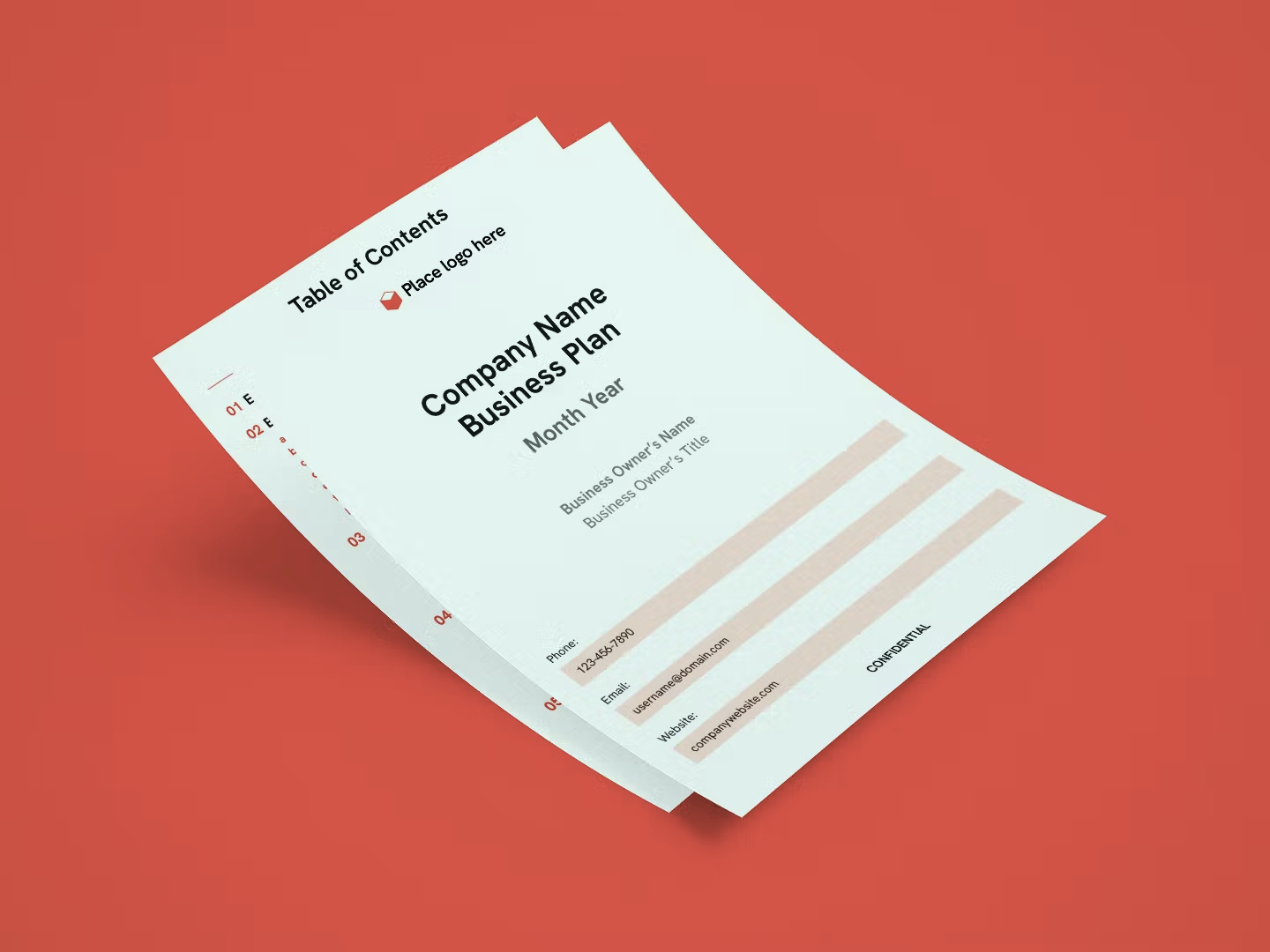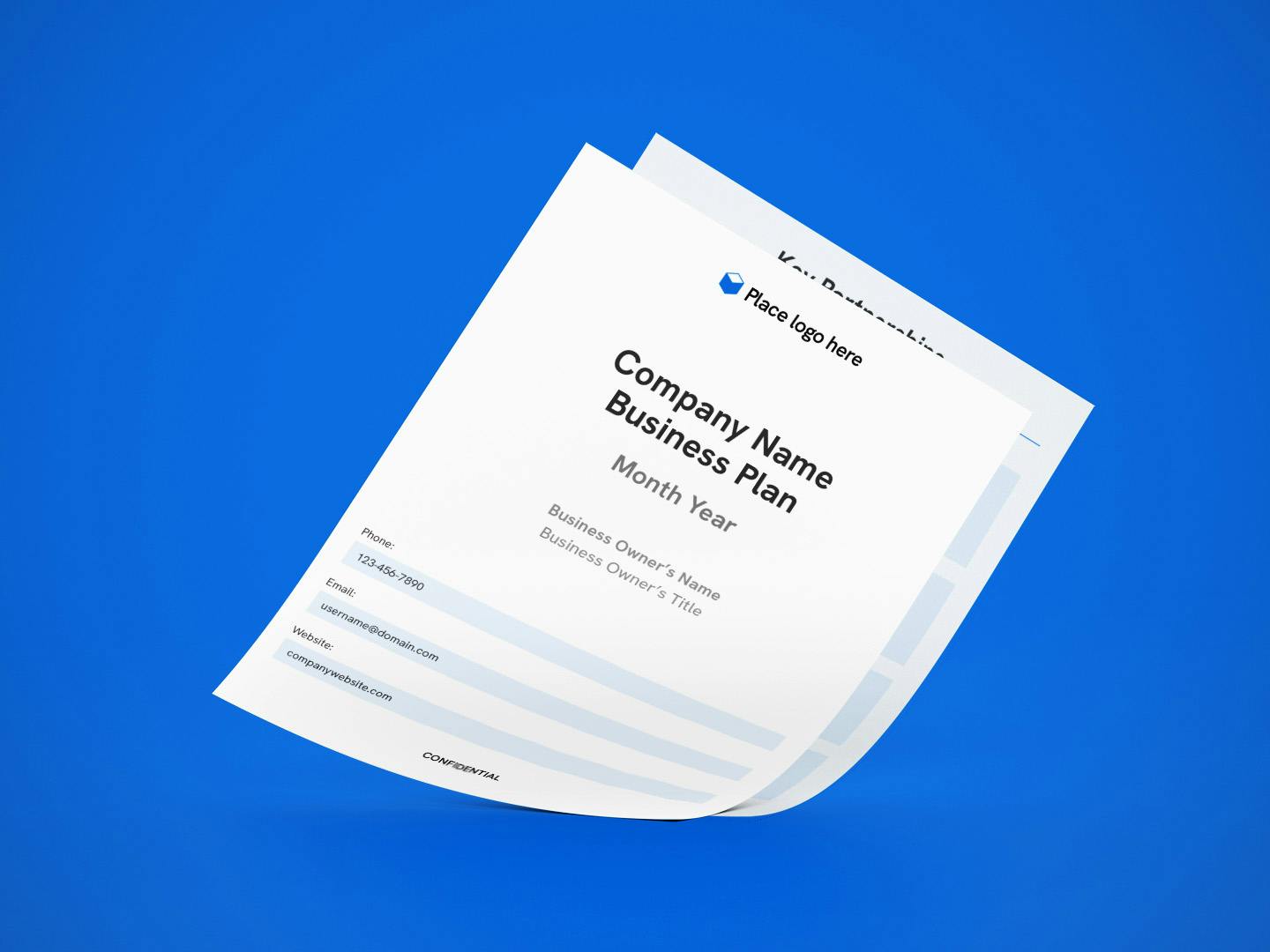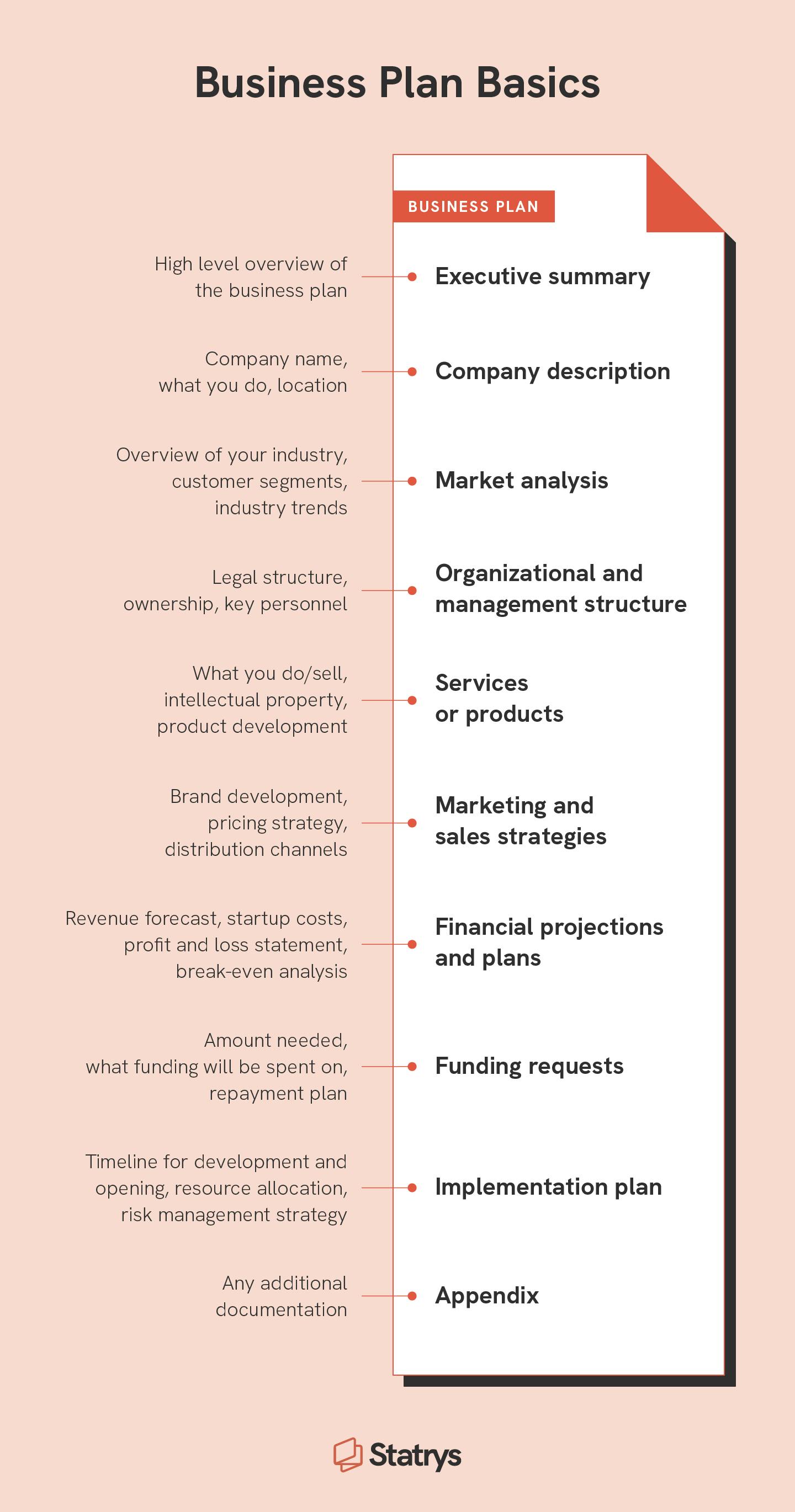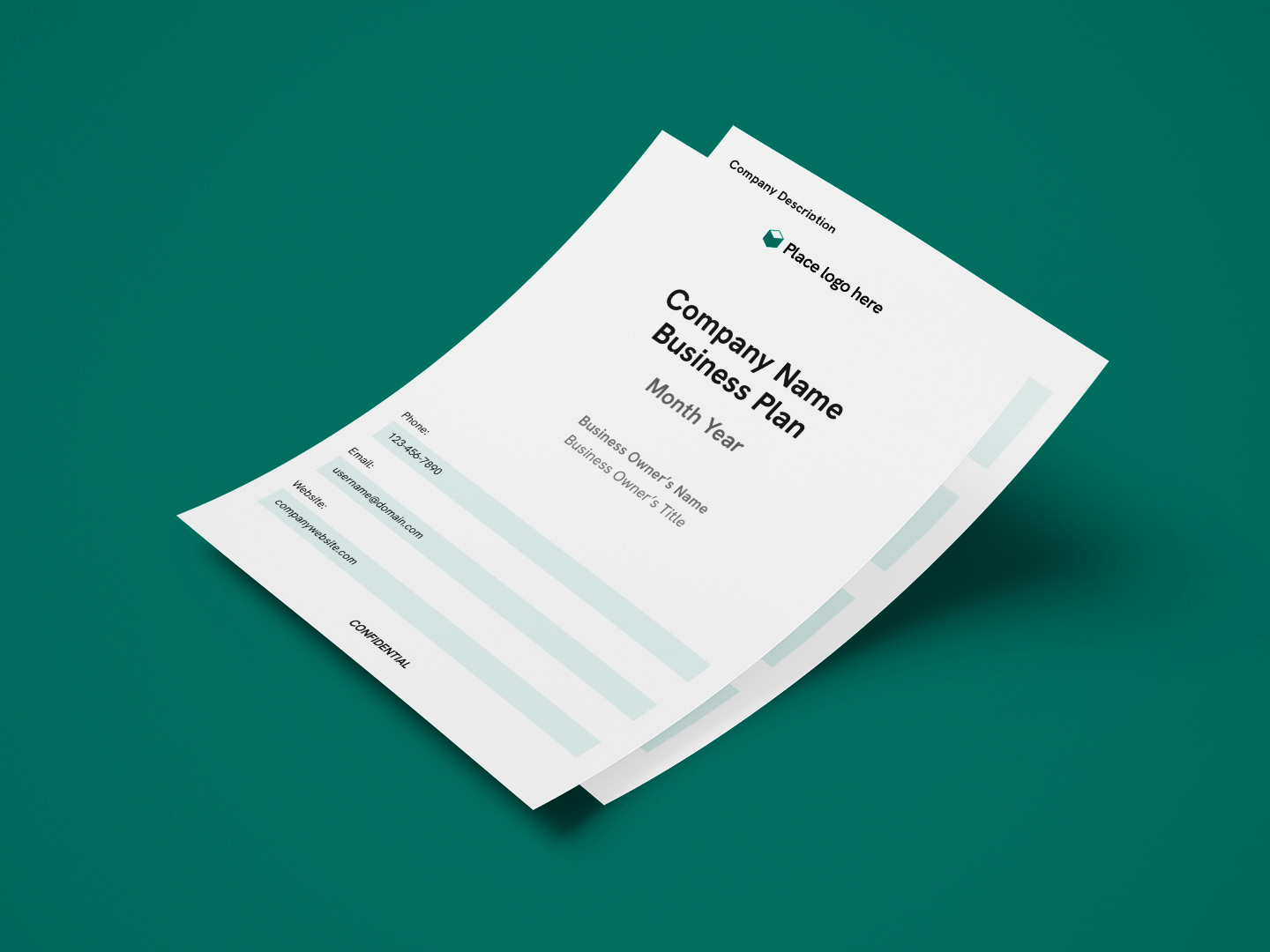Becoming a successful entrepreneur doesn’t happen by accident, and it doesn’t happen overnight. It takes a deep understanding of your industry, the need to offer something that others in the field don’t (or can’t), and a lot of planning. A business plan template is a great way to put your ideas into a form that will help you during the planning stages and when you’re running your company day to day.
A business plan can help you avoid being one of the almost 50% of businesses that fail within the first five years. A plan gives you a better chance of gaining the funding you need and the long-term guidance to make decisions that will maintain or grow your market share. Download the free business plan templates that are right for you below.
Traditional Business Plan Template

A traditional business plan is one of the most thorough plans you can create. While putting this document together will take more time and effort, it will stay helpful beyond the planning and opening stages. An excellent traditional business plan will have everything you need to open and run your business, and it can provide you with a framework for making decisions in the future. Whatever your small business idea, a traditional plan can help you prepare to make it a reality.
For a traditional business plan to be as useful as possible, it should include the following elements:
- Executive summary
- Company description
- Market analysis
- Management and organizational structure
- Service or product offerings
- Request for funding
- Financial projections
If your business idea requires fewer resources or is a fluid idea that shifts over time, a lean/startup business plan might be a better fit.
Lean/Startup Business Plan Template

The startup business plan is designed to be more flexible and less intensive to complete. If your business doesn’t need much money, equipment, or other resources to get off the ground, a lean business plan could be a good fit for you. While many of the elements of a traditional business plan are in this template, you don't necessarily have to address them in as much detail as you would in a traditional business plan. This kind of template for a business plan is a good fit for a business in the early stages of planning, and it could work well for businesses that change structure frequently.
A lean business plan should include these elements:
- Key partnerships
- Key activities
- Key resources
- Value proposition
- Customer relationships
- Customer segments
- Channels
- Revenue streams
Looking for something even more streamlined? A simple business plan template is precisely what you need.
Streamlined Business Plan Template
This simple business plan is only a few pages long and lets you lay out your business idea in the broadest possible strokes. Whether you want to use it as a guide for making decisions about your business while you’re running it or as a jumping-off point for a more in-depth business plan, its strength is in its brevity.
A streamlined business plan works best when it includes this information:
- Executive summary
- Company description
- Market analysis
- Product line/services offered
- Management and organizational structure
- Request for funding
- Financial projections
These elements are the same as those in the traditional business plan but try to answer them in a sentence or two to keep the plan as simple as possible. Ideating a single-page business plan can set you up for success in growing a service-based, brick-and-mortar, or ecommerce business.
The Essential Elements of Any Business Plan

The basic function of a business plan is to provide you, your partners, and potential investors with information about what the business needs to get started and how it will be run. That means that each business plan will have a unique combination of elements. The sections below are a great place to start because they will help you look at your business holistically.
- Executive summary: The executive summary is a broad overview of the rest of the business plan. It should provide the reader with the most important information in the plan's other sections. An executive summary is usually between 1-3 pages long and is the last part of your plan that you should write.
- Business Description: Your company description is where you start getting specific about what your business does. It should include your business's name, location, customers, and what it does. Think of this section as a summary of your market analysis, management structure, and services/product sections.
- Market analysis: In this section, you’ll provide an overview of the industry, an analysis of your competitors, and discuss who your target market is. You’ll want to include customer segments, relevant market trends, and projections for the industry's growth potential for your target market. That can be as simple as covering some information about your industry or going in-depth to show exactly how and where your business will fit in.
- Organization and management structure: In this section, you’ll cover everything from the ownership and legal structure of your company (sole proprietorship, LLC, etc.) to the experience and responsibility of key personnel. This section shows how you and your team can get an edge on your competition. An organizational chart may also be necessary for funding requests and opening corporate bank accounts.
- Services/products: This section might seem straightforward, but it can be one of the most complex parts of your business plan. Not only will you need to talk about your intellectual property and product development, but you’ll also need to cover how your supply chain will look, quality control processes, and how you’ll deliver your products or services to your customers. By illuminating your work, you can show how your customers will benefit from choosing your company.
- Marketing and sales strategies: This section will help you develop your brand, discuss your pricing strategy, cover how you’ll distribute your products, provide information about promotional strategies, and create a sales forecast. Use the information you developed in your market analysis to show how you will reach potential customers.
- Financial projections and plans: The projections and plans in this section are important for potential investors and you and your management team. The information in this section will help you determine if your business is on track or falling behind in the first several years. Include a revenue forecast, startup costs, a profit and loss statement, sales forecasts, a break-even analysis, how you’ll manage cash flow, and key financial ratios for the complete financial picture.
- Funding requests: This section is vital if you need funding to get your business off the ground (or to expand). But if you don’t need any funding, you can eliminate it from your business plan. Clearly cover what and why you need funding, a repayment plan, and a list of potential funding sources. This information will show banks, investors, or other potential sources of funding that you have a plan for the money you’re asking for.
- Implementation Plan: Your implementation plan is where you lay out just how you will get your business running. Include milestones and timelines for product development and business opening, how you’ll allocate your resources, a risk assessment and mitigation strategy, and an optional exit strategy if you plan to sell the business at a certain point. You can think of the implementation plan as applying the information and strategy you’ve gathered in the preceding sections.
- Appendix: In the appendix, you’ll include more detailed documentation covering any previous sections. For example, in-depth marketing plans, detailed financial forecasts, and raw market and customer segmentation analysis documents are commonly included in the appendix. You can also include proprietary information on your products depending on who you share your business plan with.
Now that you have an idea of some elements to include in your business plan, let’s look at some ways to make your plan stand out.
4 Tips for Creating the Perfect Business Plan

Learning how to write a business plan can be difficult and time-consuming. Whether it’s the first time you’ve tried to create one or put several of them together, each one will have its own set of challenges to work through. Below are a few ideas that can make your business plan better.
Look at Examples of Completed Business Plans
The internet is a great source for finding completed business plans. While you should look at examples from successful companies, it’s a good idea to look at plans that weren’t successful, too. They can show you some pitfalls to avoid. Check out the Small Business Administration to see examples of real business plans.
Do Your Research
Your market analysis, customer segmentation, and competitor research are essential parts of your business plan. Not only does this research show investors that you understand the totality of your market, from suppliers to customers to your competition, but it also allows you to exploit gaps that others aren’t covering. Thorough research can also help you find better, more affordable vendors and other financing sources you would have otherwise missed.
Make Your Goals Clear and Measurable
Everyone wants their business to succeed, but everyone’s definition of success differs. If you want your business to have the best chance of succeeding, you need to set clear goals and criteria for measuring performance. Without goals, you’ll never be able to tell when the time is right to expand or when to tighten your belt.
Take Your Time
When starting out, figuring out how to build a business plan — even a single-page business plan will take days or weeks to complete correctly. Rushing through a business plan can create more problems than it solves because you’re more likely to make mistakes when you’re in a hurry. A typo here and there or a slightly incorrect financial forecast might not be a dealbreaker in your eyes, but to an investor or bank, those small mistakes can make you (and your business) look unprepared. Spending a few extra days or weeks to ensure everything is perfect will be worth the effort.
Now that you’re ready to start working on your small business plan template look for ways to save money to maximize profit potential as soon as possible. Sourcing goods from manufacturers in China is one way to keep your costs low, with the opportunity to expand manufacturing if demand increases dramatically. You can also add a revenue stream in the form of an ecommerce store to make more money and grow your customer base.
FAQs
Why do I need a business plan?
A business plan helps you better understand what you need to get started. Taking the time to figure out how to create a business plan can teach you about everything that goes into running a business. It can also help you find additional revenue streams you might not have been aware of. A good plan also helps you prepare for actually running a business. If you seek funding to start a business, most financial institutions will need to evaluate a business plan to see if your business will be a good investment.











